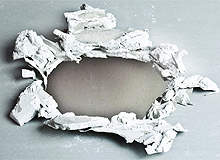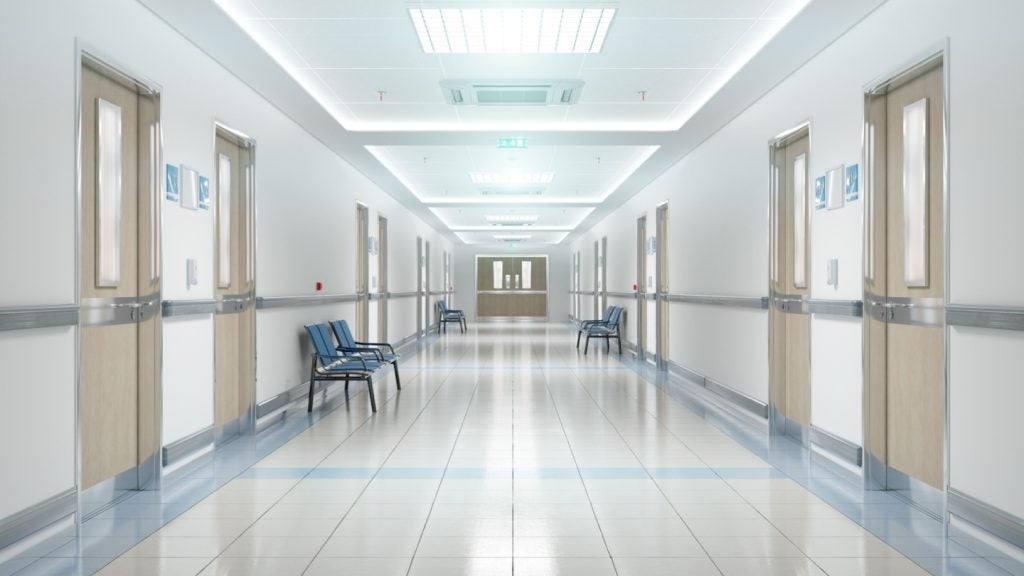
Pressure ulcers constitute a major complication threatening individuals in hospitals, nursing homes and home-care environments. A survey on prevalence in a number of European countries in 2007 revealed an overall rate of 18.1%. The National Pressure Ulcer Advisory Panel (NPUAP) estimated prevalence in US hospitals to be 15% in 2001. A pressure ulcer represents a major burden of care and reduces quality of life considerably for patients and carers. With the ageing population in the western world, it may be expected that the problem will increase considerably in the near future. Yet this is not just a problem exclusive to the elderly; spinal-cord injured patients are also at a very high risk of developing pressure ulcers, for example.
A multidisciplinary guideline development group (GDG) and several small working groups (SWGs) consisting of members of EPUAP and NPUAP were formed to design the guidelines.
What is in the guidelines?
The guidelines are systematically developed statements to assist practitioner and patient decisions about appropriate healthcare for specific clinical conditions. The recommendations may not be appropriate for use in all circumstances, so the decision to adopt a recommendation should be made by the healthcare professional in light of available resources and circumstances presented by the individual patient. The guidelines consist of two major parts: one on prevention and one on treatment. The prevention guideline contains the following chapters:
1. Etiology: this is an introductory section describing the state-of-the-art knowledge. Using a uniform terminology is also proposed in this section. An explanation of mechanical terms is given.
2. Risk assessment: this is a central component of clinical practice that should be conducted on admission and repeated as frequently as required by patient acuity.
How well do you really know your competitors?
Access the most comprehensive Company Profiles on the market, powered by GlobalData. Save hours of research. Gain competitive edge.

Thank you!
Your download email will arrive shortly
Not ready to buy yet? Download a free sample
We are confident about the unique quality of our Company Profiles. However, we want you to make the most beneficial decision for your business, so we offer a free sample that you can download by submitting the below form
By GlobalData3. Skin assessment: the skin can serve as an indicator for early signs of pressure damage.
4. Nutrition: although the exact relationship between a pressure ulcer and nutrition is still unclear, there is substantial evidence that a poor nutritional state and related factors (low body weight, poor oral food intake) are independent risk factors for development of pressure ulcers. Measures need to be taken to ensure that individuals receive adequate nutrition for their needs.
5. Repositioning: this should be considered in all at-risk individuals and must take into account the condition of the patient and the support surface. The frequency should also be influenced by the individual and support surface.
6. Support surfaces: the recommendations consist of four detailed items: mattress and bed use, prevention of heel ulcers, seats and cushions and other surfaces.
7. A special item is devoted to patients in the operating room.
Topics within the guidelines
1. Pressure ulcer classification: an accurate diagnosis and classification should be the start of pressure ulcer treatment. In this section, a major point of the discussion concerns the wording that should be used for the classification. Staging and grading suggest a progression of a wound from stage I to III or IV, when this is not always the case. A healing wound does not progress from IV to II to I. That is why the “category” is proposed as a more neutral term, but it is recognised that the words “grade” and “stage” are more familiar to the healthcare community. There is also a difference in the number of categories in Europe and the US. In Europe, four categories are defined. In the US, in addition, the categories “Unstageable” and “Suspected Deep Tissue Injury” are also defined.
2. Assessment and monitoring of healing: after an initial assessment, the progress toward healing should be monitored continuously, adjusting treatment plans as needed.
3. Role of nutrition: nutritional status should be assessed. Recommendations are provided to address caloric, protein, fluid, vitamin and mineral intake.
4. Pain assessment: specific recommendations are provided for preventing pain, managing general pain, reducing debridement pain and managing chronic pain.
5. Support surfaces: this is one of the more extensive chapters in the treatment guidelines with special recommendations for different categories of pressure ulcers and also special sections on critically ill individuals, individuals with spinal cord injuries and obese individuals. A trend that is seen in these guidelines is a growing appreciation of the value of microclimate control.
6. Wound-bed preparation: cleansing, debridement and dressings. Especially with respect to dressing considerable research was undertaken in the last decade. These results are included in the recommendations.
7. Assessment and treatment of infection: recommendations focus on early identification of patients at risk for an infection and early recognition.
8. Biophysical agents in pressure-ulcer management: this section treats subjects ranging from electrical stimulation, phototherapy to hyperbaric and topical oxygen therapy.
9. Surgery for pressure ulcers: this section focuses on preoperative preparation, intra and post-operative care and rehabilitation.
10. Pressure ulcer management of individuals receiving palliative care: this section looks at all aspects of patient care in relation to their pressure ulcers including pain control.
Strength-of-evidence ratings
A. Direct scientific evidence from properly designed and implemented controlled trials on pressure ulcers in humans, providing statistical results that consistently support the guideline statement (level 1 studies required).
B. Direct scientific evidence from properly designed and implemented controlled trials on pressure ulcers in humans, providing statistical results that consistently support the guideline statement (level 2, 3, 4 and 5 studies).
C. Indirect evidence and/or expert opinion.
Points to note
The author was not involved in development of the guidelines from the beginning. He was the chairman of the working group on etiology and involved in some of the discussions that took place in the coordinating GDG, especially during the last phases of the development.
Currently, he is a member of the working group in the Netherlands responsible for translation and adaptation to the Dutch healthcare system. Below, some issues encountered during the process of development and implementation are discussed.
The first issue is language (and cultural differences). What was very surprising – as a non-native English speaker – is the difference between US English and UK English. The weight and even the meaning of a statement can be changed considerably by choosing either one of those languages. The GDG recognised this and decided to choose US English for the guidelines. When differences between US and UK English are a problem, it is not hard to imagine how difficult it is to translate the guidelines in other languages.
Currently translations of the quick reference guide are available in Spanish, Hebrew, Swedish, German and Polish. He is involved in the translation into Dutch and witnesses on a daily basis that draft translations which are not yet fully correct may lead to misinterpretations and as a result sometimes disbelief and irritation. At the same time, it is very difficult to separate pure translation from the adaptation to the Dutch healthcare system.
In the Netherlands, experts are trying to do that (first translation, then adaption), but in the working group, it is very difficult to maintain this discipline. On the other hand, in the Dutch working group partners from all relevant clinical disciplines as well as patient groups are represented, so the author is confident that this process will lead to a good result. But, it should be clear from the above that developing an international standard is about more than just assembling and evaluating evidence and transforming that into recommendations. Users will notice that sometimes recommendations may seem superfluous, and sometimes vague. It is a task of the people responsible for implementation of the guidelines to stay as close to the evidence based recommendation as possible, taking the local resources and circumstances into account.
A second issue is the evidence. As said before, three levels are used to depict the strength of evidence for a statement. Scanning through the guidelines will show the vast majority will have strength of evidence Level C, some Level B and only very few statements have Level A.
This paper is not the proper place to start a discussion on evidence-based medicine, but in the author’s opinion, it is clear that more evidence must be obtained on the validity of at least some of the statements. This is not necessary, nor feasible, for all statements, because indirect evidence and expert opinion count.
The author believes that the guidelines should not only be used as a tool in clinical practice, but also as an incentive to drive new research. In his opinion, this defines a task for the scientific boards of the EPUAP as well as NPUAP to identify research questions and stimulate developments.
Special cases
In the guidelines, some special cases have been given extra attention, for example, patients in operating rooms and individuals receiving palliative care. In the chapter on support surfaces, a few other special populations are mentioned. However, the guideline developers are aware that more groups can be defined with very specific problems. The author mentions patients with spinal-cord injury, premature babies and patients requiring externally fixated prostheses or ortheses.
Plans for the future
Currently, both EPUAP and NPUAP are involved in the process of dissemination and implementation of the new guidelines. However, they are fully aware of the fact that guidelines should be dynamic and that they have to be adapted to the new evidence published on a daily basis.
The review of the literature was finished at the end of 2008, so they have to scan the last two years for new evidence. At the annual meeting of the EPUAP last September, the original group that constituted the GDG and some new representatives from both organisations have come together and formed new working groups that will continue to scan the literature and will prepare the next update of the guidelines.







